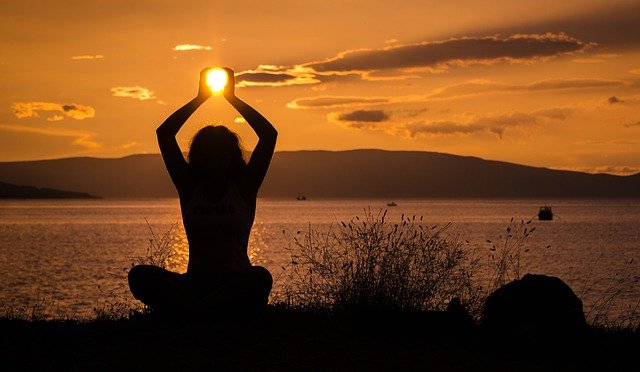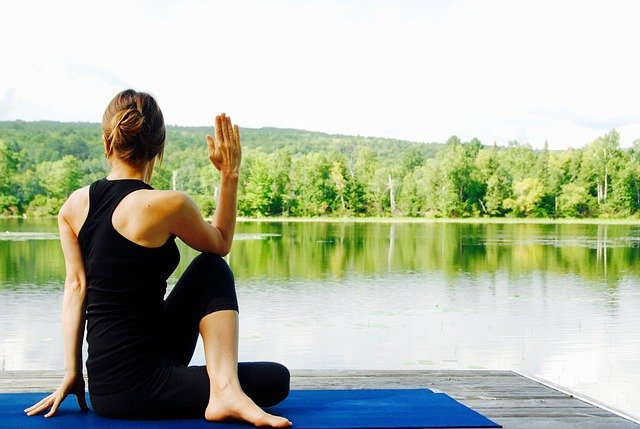Whether you’re an individual who practices yoga 3 times every week, a daily on Sunday, or a replacement follower, you’ll double the advantages of your favourite activity by removing the mat in your garden or during a park as soon because the first ones arrive. sunlight. Why? Here are three reasons to practice yoga outdoors which may convince you.
Summary for Practice Yoga Outdoors
To reconnect with nature
Yoga may be a discipline which, beyond the physical and muscular side, stimulates all the senses. The practice in nature helps to awaken even the smell, sight, and touch, thus increasing the beneficial sensations. Even once we sleep in the countryside, enjoying nature isn’t always a simple reflex to integrate into a lifestyle.
Rather than scheduling a walk, just getting some fresh air while practicing yoga helps you breathe easier and feel more present.
For the body
Reducing the danger of cancer, lowering vital sign, improving memory and a spotlight, fighting stress, gaining energy … many studies cited have shown the physical benefits related to a sporting activity practised in outside. The body is resourceful more quickly, and therefore the feeling of well-being helps to remain in shape all day long.
6 Meditation exercises for the holidays
Take a break, take a step back… Holidays are a break from our hectic lives. We also take the opportunity to be outdoors as often as possible, in contact with nature. The opportunity to meditate to find yourself with yourself. Advice from yoga expert, a specialist in wellness techniques.
Summary
- Meditate in front of a beautiful landscape
- Have Meditation by the water
- Meditate at sunset
- Do Meditate at daybreak
- Meditate while walking
Meditate in front of a beautiful landscape

The context: On a walk, at the bend of a road, you discover before your eyes a green valley, a shaded clearing, a luminous sky …
The exercise: You stop. You let yourself be touched by what is offered to you, you open yourself to the beauty and the poetry of the place. You welcome warmth and light on your skin. By trying to stay in a gentle stillness.
The effect: You become a witness to this beauty and, at the same time, the well-being that it brings you. You feel that it makes you feel good. You fill up with this good energy that will nourish you for the winter.
The nature bath is very refreshing. Many studies have shown its benefits on health, physical and mental. If the place of your meditation is suitable, do not hesitate to breathe a tree, to embrace it, to soak up its life force.
Meditate by the water

The context: By a river or a lake if you are on vacation. In town, by a pond in a park or a square.
Exercise: You take the time to stop even for a moment. And to sit with your body straight and flexible. You let yourself be rocked by watching the smallest movements on the surface. You accompany the lapping of the water.
The effect: Little by little, your mind is entirely turned towards this lapping. Practising staying centred in a visual or sound sensation is a good way to train your mind in concentration.
Meditate at sunset

The context: In the evening, on the terrace, after the effervescence of the family meal and the waltz of household chores. Lying on the grass or in a lounge chair, you find yourself in a quiet place.
The exercise: You become a spectator of the arrival of the night. You are gradually entering the shadows, with the thousand little noises in the air, near or far. You contemplate the sky and follow the appearance of the stars. Without forgetting to make a wish.
The effect: This way of feeling part of the night is one of the most beautiful ways of learning to be silent. You welcome it and you feel good there. The night offers a quality of atmosphere that touches your inner being, the peace of your heart. An experience of calm that is enriching to share with other people.
Meditate at daybreak
The context: The night before, you program your alarm clock to go and watch the sunrise. A dazzling spectacle just for you! Followed by the happiness of going back to bed and going back to sleep until croissants …
The exercise: It’s up to you to record everything that happens. To feel that the day rises before the sun. That there is a neutral time, a sort of airlock, between night and sunrise. Everything is night grey, the colours are mat. But as soon as the sun rises on the horizon, it emerges like a balloon that leaps out of the night. The colours wake up and light up.
The effect: To live the passage from night to day in this way, calmly, is symbolically very strong. It brings you back to all the passing times of your existence, not always easy to live with.
Meditate while walking
The context: In the forest, out for a walk on a sunken lane or on a dike by the sea. Alone, with family, with friends. You become aware of the way you walk and that you can do it with more harmony.
Exercise: You slow down. You are careful to use only the muscles you need and to relax all the others (shoulders and jaws). You keep your arms and chest flexible. And stay aware of how your every step unfolds. By feeling the contact of the foot on the ground.
The effect: Your mind enters entirely into this step and is no longer in the agitation of thoughts. Walking mindfully is a very useful exercise to practice anytime, anywhere.
The benefits of walking are multiple, especially on the heart, blood circulation. This well-being activity accessible to all is also excellent for the mind: it allows you to decompress, to calm down, to be positive.
Prenatal yoga: which postures that benefits?
Does eating tomatoes cause kidney stones? Find out the truth …!
Mediterranean diet : 6 keys to lower your cholesterol
Back pain due to osteoarthritis: what relieves
18 benefits of yogurt: why eat it?
